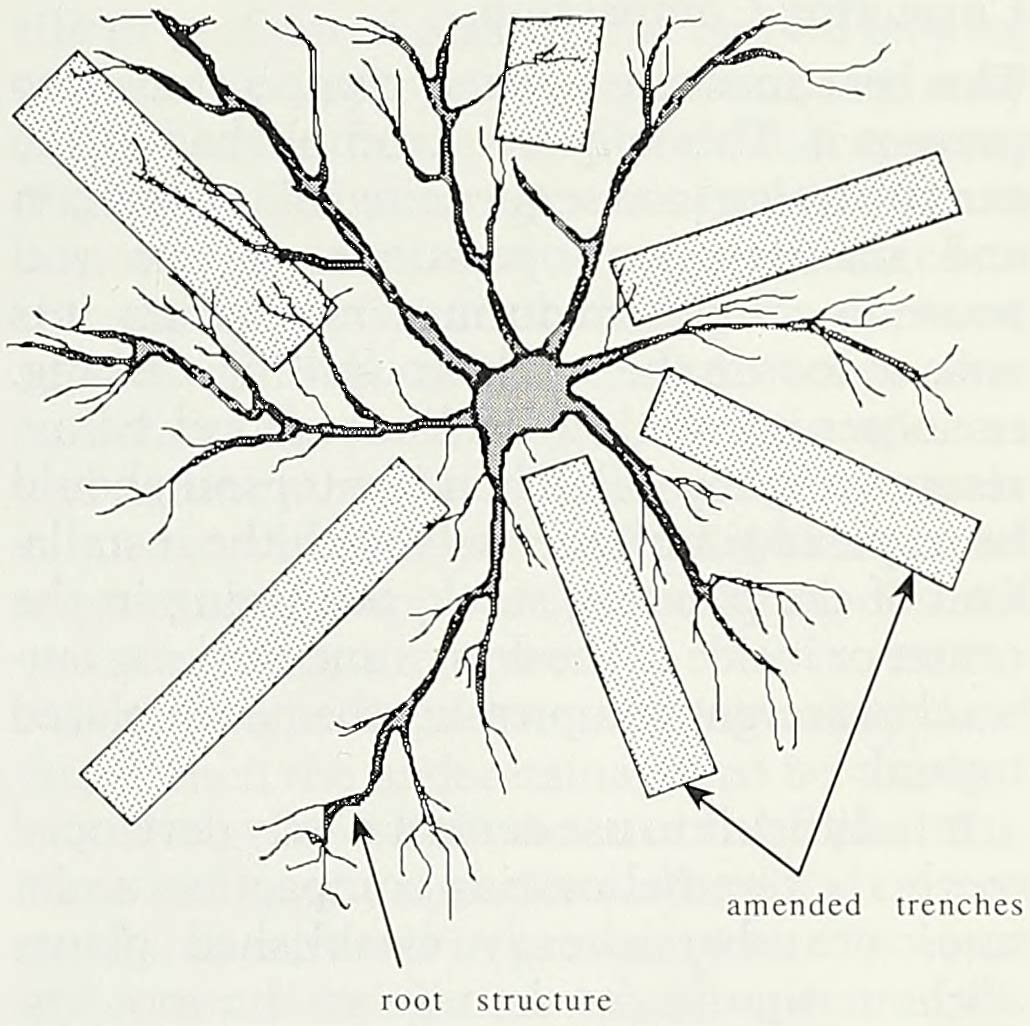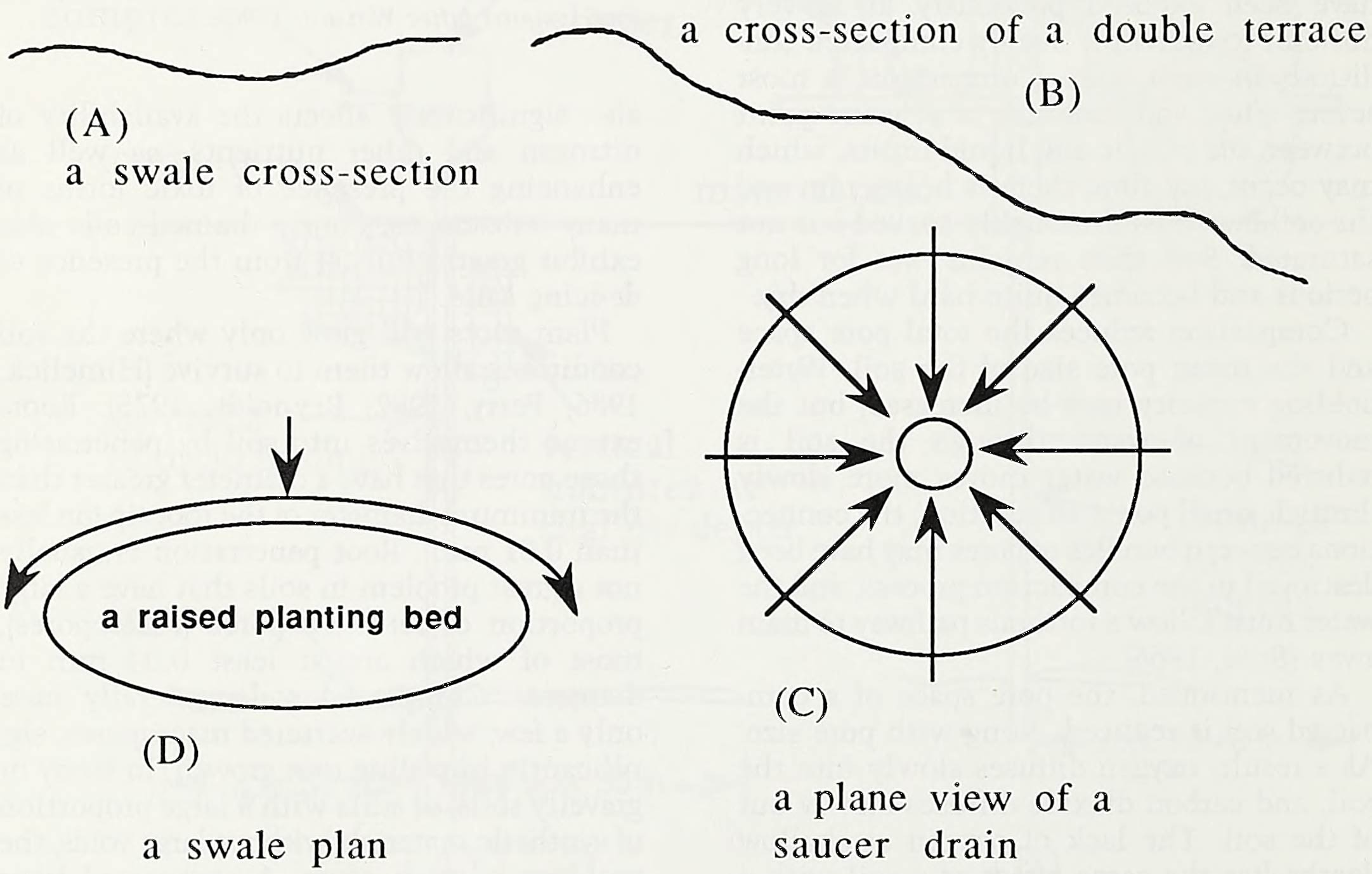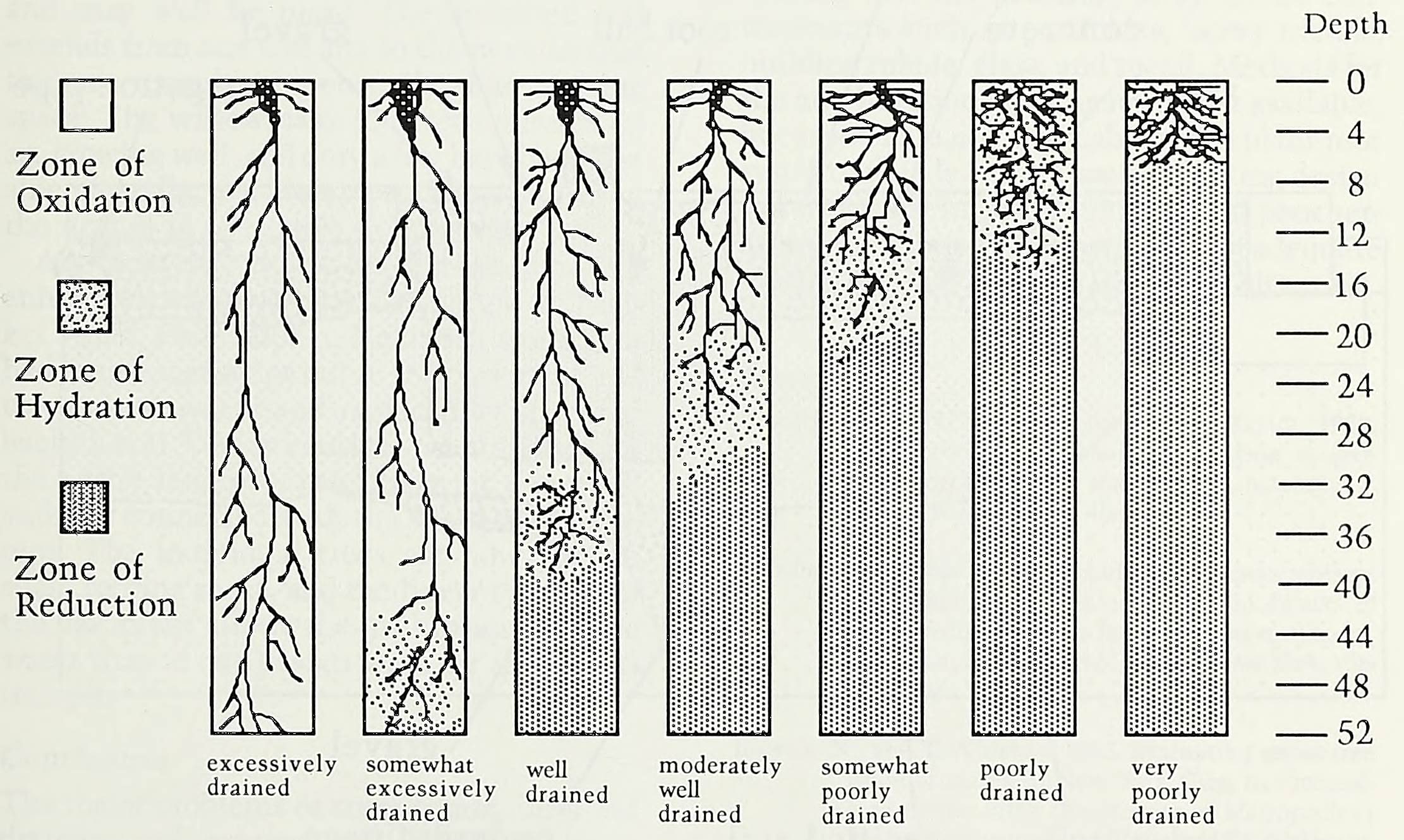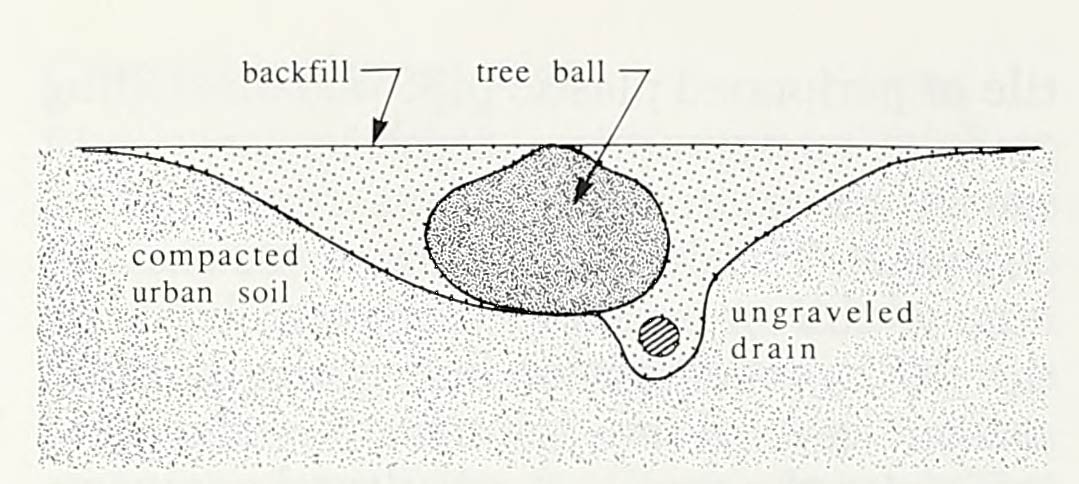Street trees die for many reasons, but the best place to start looking for causes is in the soil.
Recently, we have come to recognize the importance of trees in metropolitan areas not only for their ability to improve the quality of life but also for their ability to moderate the physical environment. Further, many authorities, such as Operation Global Releaf and the American Forestry Association, point out the need to plant more trees to offset the global warming trend of the “greenhouse effect.” If we temporarily set aside the merits or limitations of the basic premise on which the warming forecasts are based, the success of the extensive tree-planting programs that have been proposed requires the application of sound tree-planting principles if they are to avoid some of the widespread failures of the past.
Unfortunately, much of the information on the techniques and specifications of tree planting and soil preparation, uncritically repeated for years, has proven to be unsatisfactory or downright wrong for many situations, and little has been done to correct these practices. In recent times we have made some progress in distributing the correct information, but much of this updated material, based upon the experience of a wide range of professionals, has failed to reach the attention of those who need it most—landscape architects, architects, foresters, arborists, horticulturists, and landscape contractors.
One of the most misunderstood, least-researched, and least-documented factors is the urban soil (Spirn, 1984). Plantings are made with little appreciation of or attention to the character of the material that lies beneath the surface. Elaborate and expensive designs are produced and installed only to have the plants succumb to some malady even before the grower’s guarantee—usually two years—expires. As Cox stated in 1916:
The problems which have to do with soil conditions are less simple of solution and yet it is upon the skill shown in solving them that the success or failure of the whole operation must depend. To secure correct soil conditions, it is necessary to provide for each and every tree as follows: (1) a sufficient amount of good soil; (2) sufficient moisture; (3) proper drainage; (4) proper aeration of the soil; (5) a supply of plant food.
Since 1916 the situation has not changed that much. We are still concerned with fulfilling the same growth requirements for the same reasons, and we still do not fully appreciate the complexities of the soil conditions presented by the urban environment (Walterscheidt, 1984).
A Description of Urban Soil
Urban soil may be defined as soil that has been disturbed or manipulated by human activity connected with construction and urbanization. It has one or more horizons or layers, at least 50 centimeters thick, comprised of material that has undergone one or more of the following actions associated with urban activities: mixing, compaction, pulverization, filling, scraping, and/or the addition of synthetic contaminants or toxic substances at levels above those of natural soil (Figure 1) (Craul, 1985a, 1985b; Blume, 1986; Zemlyanitsky, 1963).

Because urban soils are always associated with human activities, their characteristics are determined by their previous construction history and by the degree of disturbance they have undergone. Therefore, urban soils typically show great variability in vertical profile, as well as horizontally across the landscape, due to the cut and fill, backfilling, and resurfacing that occur during the process of land shaping (Blume, 1986; Craul and Klein, 1980).
The manipulation and disturbance to urban soils by various construction and restoration activities cause compaction of at least the surface layer and, in many cases, the lower portions of the soil profile as well (Alberty et al., 1984). Compaction affects the soil (1) by reducing the ease of root penetration, (2) by decreasing the ready movement of water, and (3) by causing a reduction in its water-holding capacity. In addition, compaction reduces the movement of gases into and out of the soil, particularly the inflow of oxygen, which roots require to function properly, and the outflow of carbon dioxide, which must be removed (Hillel, 1980). By reducing effective soil depth, compaction forces roots to grow close to or on the soil surface (Gilman et al., 1987).
Elevated Temperatures and Soil Reaction
Most urban areas behave as “heat islands,” as a result of the production of heat energy within the area through industrial, commercial, and residential processes and of the large amounts of heat that are stored and reflected off paved or otherwise covered areas, such as streets, highways, sidewalks, parking areas, building rooftops, and facades (Landsberg, 1981; Vittum, 1974). In addition, the large amount of covered land in cities means less open soil and less vegetation, which would ordinarily have a cooling effect. The net result of these factors is to raise not only the soil temperatures above those normally expected for the natural soils of the area (Halverson and Heisler, 1981), but also the air temperatures, thereby increasing the moisture stress on the urban vegetation and often leading to reduced vigor (Bassuk and Whitlow, 1985).
The soil reaction, otherwise known as pH, determines to a large extent the form and availability of nutrients. Soil reaction also affects the activity and diversity of the soil’s microorganism populations on which many nutrient processes are dependent (Alexander, 1980). To complicate matters, much of the water in urban areas flows over synthetic materials such as asphalt, concrete, and masonry. As it moves, the water dissolves substances from these surfaces and also absorbs others from the deposition of air pollutants (Bryan, 1972; Halverson et al., 1982; Owe, 1981). These substances are carried into the soil and undergo reactions that tend to raise the soil pH. For some plants, this elevated pH increases vigor and may simplify the soil management for a given plant palette. For other species, particularly acid-loving species such as rhododendrons, the elevated soil pH may have detrimental effects, such as nutrient deficiencies and increased toxic-substance solubilities, making soil management a complex problem (Moore, 1974).
Interrupted Nutrient Cycling and Lack of Soil Microbes
Organic matter is periodically deposited on natural soils by trees and shrubs in the form of leaves and branches. These organic remains are decomposed by various soil-inhabiting organisms, and the nutrients and energy they contain are released for utilization by the organisms themselves and by the associated vegetation. In urban soils these cycles are interrupted by various factors: leaf litter is often swept up as trash, or very little litter falls on urban soils because of the low amount of biomass produced by the plants. As a result of the shortage of organic matter, the diversity and activity of soil microorganisms in urban soil are reduced below optimum levels.
Presence of Man-made Materials
Most urban soils contain various forms of man-made materials, such as wood, metal, glass, plastic, asphalt, and masonry. The materials have several effects on the soil and on the vegetation it may support. They can physically obstruct root penetration, water movement, and gaseous diffusion on the one hand, or they can have the opposite effect by creating large voids, which permit the excessive drainage of water through the profile.
In some cases, these man-made materials may, when decomposing, release products that are toxic to plants and soil organisms. The problems become particularly serious if the soils are contaminated by heavy metals, de-icing salts, herbicides, pesticides, and industrial wastes. Because of the complexity of the chemistry involved, mitigating such problems is complex.

Bare soil in urban areas is subject to wet and dry deposition of air pollutants, including various hydrocarbons, their esters and fatty acids, and other substances produced by burning fossil fuels. These oil-based substances coat the soil particles, thereby making them water repellent (Jex et al., 1985). This phenomenon, coupled with crust formation due to compaction by foot traffic on the bare soil, greatly reduces or even prevents water infiltration, thus contributing to soil drought. Fortunately, these water-repellent crusts do not appear to form when the soil is covered by grass.
The Effects of Compaction
Compaction is one of the major problems degrading urban soils, and the condition can often be prevented by prior planning and careful management of maintenance operations (Patterson, 1976). It is caused by shear and stress forces applied to the soil by foot and vehicle traffic (Hillel, 1980). It is usually most severe on playing fields and other places where people concentrate. Soil may be compacted to considerable depths by vibration, or by traffic on the surface where that layer may have been exposed previously. It is very difficult to overcome deeply compacted conditions in most soils. Compaction is most severe when soil moisture is at some point between the plastic and liquid limits, which may occur any time there is heavy rain and the soil becomes thoroughly soaked but not saturated. Soil then remains wet for long periods and becomes quite hard when dry.
Compaction reduces the total pore space and the mean pore size of the soil. Water-holding capacity may be increased, but the movement of water through the soil is reduced because water moves more slowly through small pores. In addition, the connections between bundles of pores may have been destroyed in the compaction process, and the water must follow a tortuous pathway to drain away (Rose, 1966).

As mentioned, the pore space of a compacted soil is reduced, along with pore size. As a result, oxygen diffuses slowly into the soil, and carbon dioxide diffuses slowly out of the soil. The lack of oxygen at shallow depths has the same effect as a soil with a shallow rooting barrier. The reducing condition (the high pH) present in many urban soils also significantly affects the availability of nitrogen and other nutrients, as well as enhancing the presence of toxic forms of many substances. Poorly drained soils also exhibit greater impact from the presence of de-icing salts.
Plant roots will grow only where the soil conditions allow them to survive (Himelick, 1986; Perry, 1982; Reynolds, 1975). Roots extend themselves into soil by penetrating those pores that have a diameter greater than the minimum diameter of the root tip (no less than 0.01 mm). Root penetration is usually not a great problem in soils that have a large proportion of air-filled pores (macropores), most of which are at least 0.03 mm in diameter. Compacted soils generally have only a few, widely scattered macropores, significantly impeding root growth. In stony or gravelly soils, or soils with a large proportion of synthetic materials without large voids, the problem is more acute. A compacted layer below a layer of respread topsoil has the same effect as a shallow soil.
Correcting Compaction
The best measure against compaction is to prevent it. This may be accomplished in the careful design (and sequencing) of installation and maintenance operations. If the soil becomes compacted during construction, it is wise to loosen the soil by rototilling, disking, or loosening with a backhoe shovel before respreading topsoil. Then the topsoil should be respread simultaneously with the installation of the planting stock, beginning in the center or inside of the design and working outward to prevent compressing the newly placed topsoil.
It is difficult to use certain newly developed methods for ameliorating compaction under trees or other already established plants without significant damage to the root systems. Two machines recently tested “explode” air into the soil at depth; then the newly formed voids are filled with vermiculite or similar material. Studies have shown mixed results in loosening the subsoil (Smiley et al., 1990) (Figure 2). Watson describes a trenching and compost-backfilling method attributed to an old Chinese technique that appears to have merit (Figure 3). Turf areas are amenable to aeration techniques originally developed for golf courses and playing fields.
Improving Drainage
Both surface and subsurface drainage must be considered in any design. Surface drainage may carry needed water away from a planting or may carry excess water (often contaminated with de-icing salts, or other toxic substances) into a planting. The final design grade must provide for swales, berms, and terraces, such as those shown in Figure 4, to create the most favorable drainage pattern across the project by carrying water away from plants sensitive to excess water.

When drainage at a given site is impeded by soil compaction or by a high clay content or by a shallow impervious layer, berms are an appropriate solution. Care must be exercised in developing the soil specification for the berm. The soil should not be self-compacting, should remain friable when wet, should have a low erosion potential, and should have an adequate water-holding capacity for its volume.
Subsurface drainage or underdrainage design is required if the soil has limited natural drainage, unless the planting palette contains plants adapted to wet soils (Figure 5). Subsurface drainage design usually consists of tile or perforated plastic pipe laid on sloping grade at an appropriate depth to carry away excess water from the plant root systems (Figure 6). The drainage must be adequate to remove the amount of water contributed to the site by precipitation during the dormant season as well as any runoff water that infiltrates the profile. Agricultural engineers and agronomists have developed these techniques to a high degree, and many designs are appropriate for application to urban soils. All too often they are ignored.


If the planting is linear along a length of street, then the underdrainage can be continuous along the whole extent of the planting. Note in Figure 6 that the walls of the tree pit are flared outward to provide greater volume of loosened soil for lateral extension of the most important surface-feeding roots.
Appropriate Soil Rooting Volume
One of the major questions in urban tree planting in confined spaces is how much soil volume must be furnished for each tree. Because of design considerations, it is not simply a question of “the more the better.” Most planting specifications follow the old dimensions of 4 feet by 4 feet, by about 2 feet deep (32 cubic feet). Many tree-planting pits in sidewalks and streetside situations are much smaller than these dimensions; the author has found some as small as 2 feet by 2 feet, by 3 feet deep (12 cubic feet), supporting very poor plant specimens. As far back as 1916, Cox recommended streetside tree pits with dimensions of 4 feet by 8 feet, by 2 feet deep (64 cubic feet). Kopinga (1985) found that 75 cubic feet was the minimum volume for adequate (but not optimum) growth of the American elm in the Netherlands.

Urban has examined the planting situations and tree-growth response of nearly 1500 trees in five major eastern cities of the United States. He shows that the healthiest and largest trees had about 600 cubic feet of soil available to them and that about 300 cubic feet was minimum for those trees with adequate vigor. It must be understood that trees planted in a favorable situation can be vigorous with much less space than 300 cubic feet. Obviously, open-planted trees do not suffer restricted rooting volume unless the surrounding soil is compacted.
Systems for Improved Drainage
Jewell (1981) reviewed various planting designs for sidewalk or paving-covered soil situations. A vault system that appears to be very successful is the one designed for Pennsylvania Avenue in Washington, D.C. (Figure 7). This design provides for aeration and irrigation of the soil under the sidewalk, encouraging the extension of roots into additional soil. The design shows a 14-foot-diameter irrigation ring over a soil that is 24 inches deep. The potential rooting volume is at least 307 cubic feet and may well be more. The specified soil extends from one tree site to the next, so that the tree roots may eventually share rooting space. The willow oaks (Quercus phellos L.) are growing well, and only a few have been lost since installation fifteen years ago. However, the design is expensive to construct.
Citation: Craul, P. J. 1991. Urban soils: Problems and promise. Arnoldia, 51(1): 23–32.
Another technique for linear planting enhances rooting volume. In a design for Market Street, Philadelphia, Heidi Schustermann had long linear strips cut in the pavement and the soil excavated and replaced by specified backfill soil. Underdrainage was furnished for the entire length of the linear pit (Figure 8) and was connected with the storm-sewer system. The individual trees are now able to share rooting space, and the linear opening in the pavement allows the infiltration of more water than if the design were for individual tree pits

Conclusion
The major problems of compaction, impeded drainage and aeration, and lack of adequate rooting volume, coupled with intermittent but severe heat-load stress, are present in most urban soil situations. Other urban soil characteristics include extreme variability in properties both vertically and spatially, elevated pH, presence of hydrophobic crusts, high soluble salt content, limited organic matter and organism population, interrupted nutrient cycling, and the presence of synthetic contaminants such as pesticides, heavy metals, building rubble, glass, and metal. Methods for the amelioration of compaction are available, but several are not applicable when plant root systems already exist. Careful planting design can overcome impeded drainage and poor aeration, and should also provide for adequate rooting volume appropriate for the situation.
References
Alberty, C. A., H. M. Pellett, and D. H. Taylor. 1984. Characterization of soil compaction at construction sites and woody plant response. J. Environ. Hort. 2(2): 48-53.
Alexander, M. 1980. Effects of acidity on microorganisms and microbial processes m soil. In Effects of Acid Precipitation on Terrestial Ecosystems, ed. T. C. Hutchinson and M. Havas. New York: Plenum, pp. 363-374.
Bassuk, N., and T. Whitlow. 1985. Evaluating street tree microclimates in New York City. In Proceedings of the Fifth Conference of Metropolitan Tree Improvement Alliance (METRIA), pp. 18-27.
Blume, H-P. 1986. Characteristics of urban soils. In Man and the Biosphere, edited by the German National Committee. International scientific workshop on soils and soil zoology in urban systems as a basis for management and use of green/open spaces. Berlin: UNESCO, pp. 23-46.
Bryan, E. H. 1972. Quality of stormwater drainage from urban land. Water Resources Bull. 8(3): 578-588.
Cox, L. D. 1916. A Street Tree System for New York City, Borough of Manhattan. New York State Coll. of Forestry, Syracuse, bull. 16, no. 8.
Craul, P. J. 1985a. Urban soils. METRIA 5: 45-61.
Craul, P. J. 1985b. A description of urban soils and their desired characteristics. J. Arboric. 11(11): 330-339.
Craul, P. J., and C. J. Klein. 1980. Characterization of streetside soils of Syracuse, New York. METRIA 3: 88-101.
Gilman, E. F., I. A. Leone, and F. B. Flower. 1987. Effect of soil compaction and oxygen content on vertical and horizontal root distribution. J. Environ. Hort. 5(1): 33-36.
Halverson, H. G., and G. M. Heisler. 1981. Soil temperatures under urban trees and asphalt. USDA Forest Serv. Res. Pap. NE-481.
Halverson, H. G., D. R. DeWalle, W. E. Sharpe, and D. G. Wirries. 1982. Runoff contaminants from natural and man-made surfaces in a nonindustrial urban area. In Proc. 1982 Intern. Symposium on Urban Hydrology, Hydraulics and Sediment Control. Lexington: Univ. of Kentucky, pp. 233-238.
Hillel, D. 1980. Fundamentals of Soil Physics. New York: Wiley.
Himelick, E. B. 1986. Root development of trees growing in an urban environment. Illinois Natural History Survey Report No. 262.
Jewell, L. 1981. Construction: planting trees in city soils. Landscape Architecture 71(3): 387-389.
Jex, G. W., B. H. Bleakley, D. H. Hubbell, and L. L. Munro. 1985. High-humidity-induced increase in water repellency in some sandy soils. Soil Sci. Soc. Am. J. 49: 1177-1182.
Kopinga, J. 1985. Research on street tree planting practices in the Netherlands. METRIA 5: 72-84.
Landsberg, H. E. 1981. The Urban Climate. New York: Academic Press.
Moore, D. P. 1974. Physiological effects of pH on roots. In The Plant Root and Its Environment, ed. E. W. Carson. Charlottesville: Univ. Press of Virginia, pp. 135-151.
Owe, M. 1981. The distribution of heavy metals and petroleum residues in the soil from urban surface runoff. Ph. D. thesis, SUNY, Coll. Environ. Sci. and Forestry, Syracuse, N.Y.
Patterson, J. C. 1976. Soil compaction and its effects upon urban vegetation. Better Trees for Metropolitan Landscapes Symposium Proc. USDA-Forest Service. Gen. Tech. Rep. NE-22.
Perry, T. O. 1982. The ecology of tree roots and the practical significance thereof. J. Arboric. 8(8): 197-211.
Reynolds, E. R. C. 1975. Tree rootlets and their distribution. In The Development and Function of Roots, ed. J. G. Torrey and D. T. Clarkson. New York: Academic Press.
Rose, C. W. 1966. Agricultural Physics. Oxford: Pergamon Press.
Smiley, E. T, G. W. Watson, B. R. Fraedrich, and D. C. Booth. 1990. Evaluation of soil aeration equipment. J. Arboric. 16(5): 118-123.
Spirn, A. W. 1984. The Granite Garden. New York: Basic Books.
Vittum, J. S. 1974. The physical structure of city space and its effects on microclimate and human thermal comfort. M.S. thesis. SUNY Coll. Environ. Sci. and Forestry, Syracuse, N.Y.
Walterscheidt, M. J. 1984. Have we been preaching the same sermon for 60 years? J. Aiboric. 10(1): 9-12.
Watson, G. W. 1990. Tree growth revisited. Golf Course Management (6): 8-10, 12-14, 16, 18, 22, 24-25.
Zemlyanitsky, L. T. 1963. Characteristics of the soils in the cities. Sov. Soil Sci. (5): 468-475.
Phil Craul is Professor of Soil Science at the State University of New York in Syracuse and a Lecturer in Landscape Architecture at the Graduate School of Design, Harvard University.